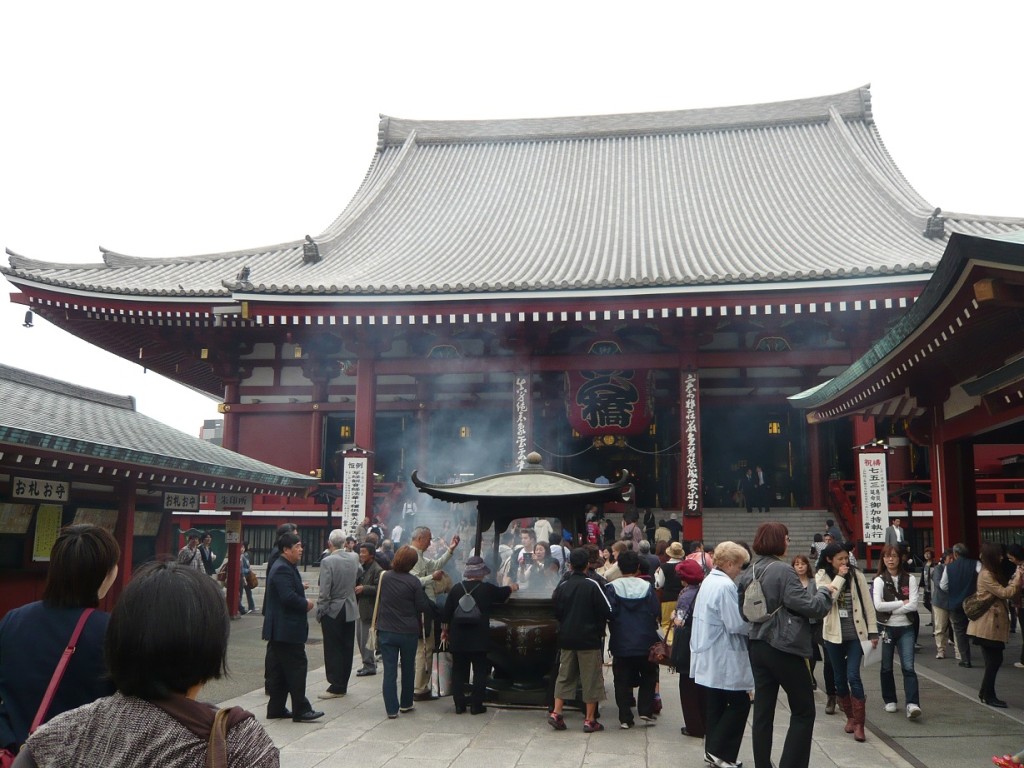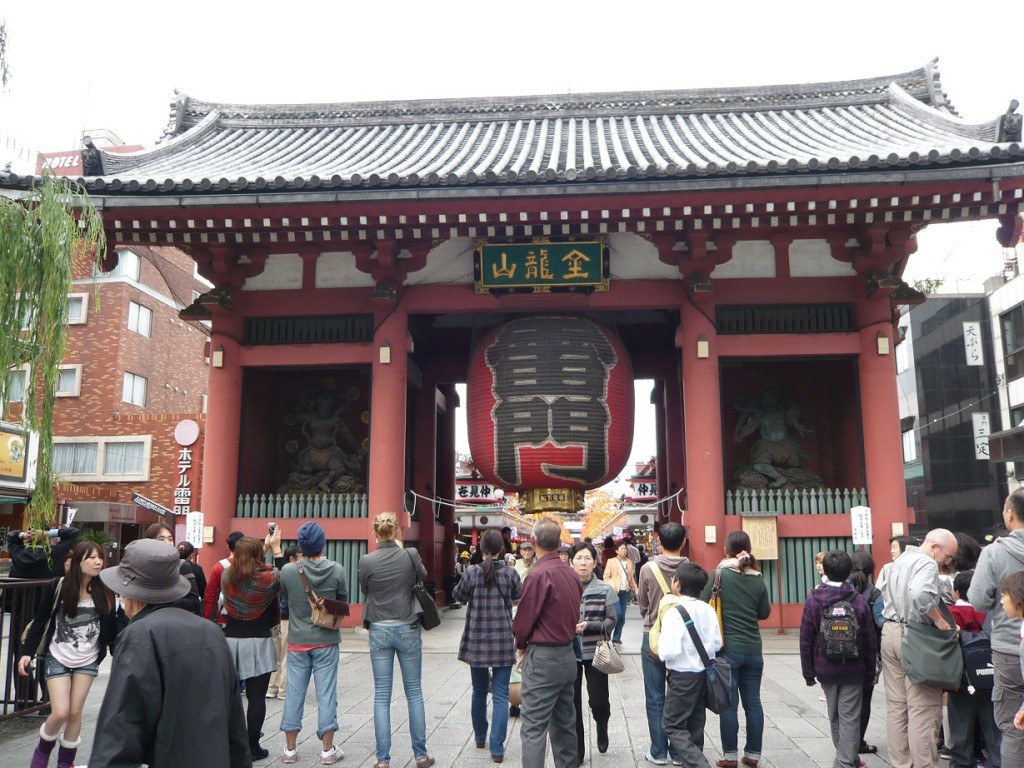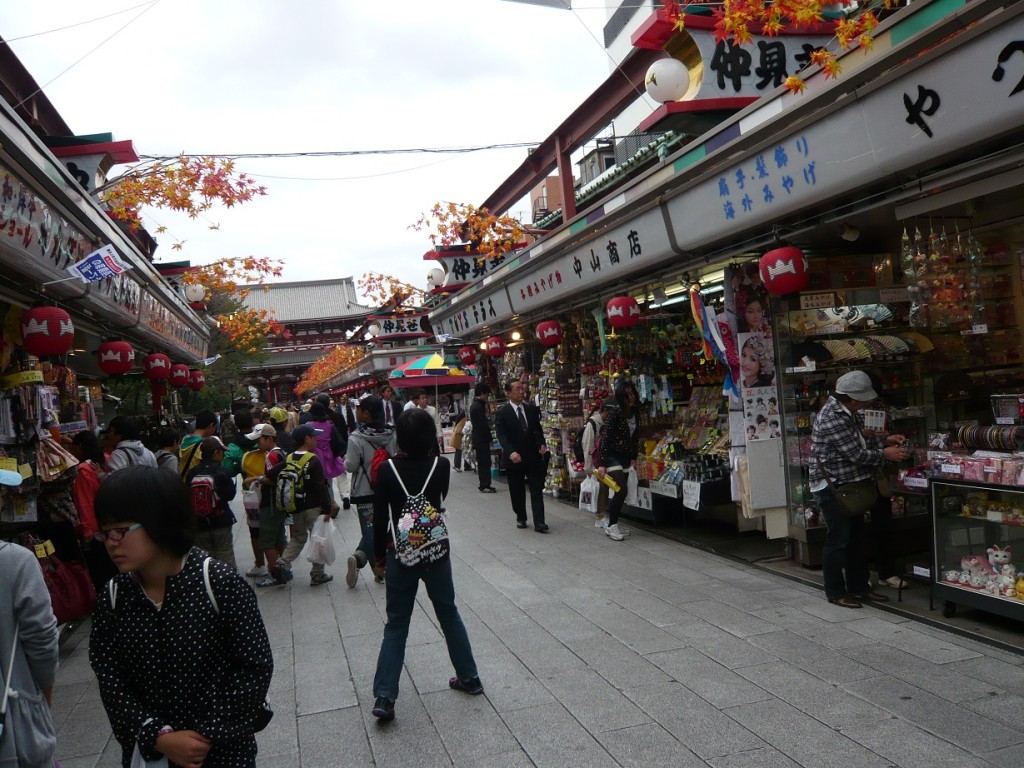Shrines and Temples
 Asakusa Senso Temple
Asakusa Senso Temple
Senso Temple is located in Asakusa which is about 20 minutes from Tokyo station by subway. The temple is the most popular site in Tokyo for both Japanese and foreign tourists. Open: 6am to 5pm every day of the year Admission: Free
Tiny Statue
 The tiny, hidden Bodhisattva Kannon statue is housed inside the sanctum at the extreme rear of the Main Hall. Unfortunately, it cannot be viewed by the public. It is said that two fisherman found the five centimeter statue in their fishing net when they were fishing in a nearby river during the early part of the seventh century and they enshrined it in this temple.
The tiny, hidden Bodhisattva Kannon statue is housed inside the sanctum at the extreme rear of the Main Hall. Unfortunately, it cannot be viewed by the public. It is said that two fisherman found the five centimeter statue in their fishing net when they were fishing in a nearby river during the early part of the seventh century and they enshrined it in this temple.
Kaminarimon Gate
 The gate is a symbol of the temple and is the most famous landmark in Asakusa. Hanging from the gate is a huge red lantern on which the Chinese character for “thunder” is written. There are two wooden statues, Hujin and Raijin, standing on each side of the gate. Hujin is the god of wind while Raijin is the god of thunder. The original gate was erected early in the 10th century but burned down several times. The present one was built about 50 years ago and donated by Japanese entrepreneur Konosuke Matsushita who is the founder of Panasonic.
The gate is a symbol of the temple and is the most famous landmark in Asakusa. Hanging from the gate is a huge red lantern on which the Chinese character for “thunder” is written. There are two wooden statues, Hujin and Raijin, standing on each side of the gate. Hujin is the god of wind while Raijin is the god of thunder. The original gate was erected early in the 10th century but burned down several times. The present one was built about 50 years ago and donated by Japanese entrepreneur Konosuke Matsushita who is the founder of Panasonic.
Nakamise Street
 Nakamise is one of the oldest shopping streets in Japan and stretches approximately 250 meters from Kaminarimon Gate to the Main Hall. Around 100 shops align the street. Early in the Edo period (about 400 years ago) many tea houses and shops began opening and the street became very busy over time. Today, you can find all kinds of traditional Japanese souvenirs such as yukatas, folding fans, and beautiful Kokeshi dolls. In addition, there are many traditional sweet shops.
Nakamise is one of the oldest shopping streets in Japan and stretches approximately 250 meters from Kaminarimon Gate to the Main Hall. Around 100 shops align the street. Early in the Edo period (about 400 years ago) many tea houses and shops began opening and the street became very busy over time. Today, you can find all kinds of traditional Japanese souvenirs such as yukatas, folding fans, and beautiful Kokeshi dolls. In addition, there are many traditional sweet shops.
[ History Back ]
 Zojo Temple
Zojo Temple
Zojo Temple was constructed in 1598. After the start of the Edo Period (1603-1867) when the Tokugawa Shogunate ruled Japan, Zojo temple became one of the temples of the Tokugawa family. Zojo Temple is located 10 minutes by subway from Otemachi (the center of Tokyo).
Open: 9am to 5pm every day of the year
Admission: Free
The Main Gate (San-Gedatsu-Mon)
 As the face of Zojo temple, the main gate strikes passersby as magnificent. This wooden gate was built in 1622 and today remains the only architectural reminder of the early days of the Edo Period.
As the face of Zojo temple, the main gate strikes passersby as magnificent. This wooden gate was built in 1622 and today remains the only architectural reminder of the early days of the Edo Period.
[ History Back ]
 Meiji Shrine
Meiji Shrine
 The shrine was built in 1920 and enshrines Emperor Meiji and his wife. They lived during the Meiji period which spanned from 1868 to 1911. This shrine is the most popular shrine in the Tokyo Metropolitan area attracting over 3 million visitors during the New Year holidays alone. When spring and autumn festivals are held, traditional performances such as Noh drama, ancient court music and dancing can be viewed.
The shrine was built in 1920 and enshrines Emperor Meiji and his wife. They lived during the Meiji period which spanned from 1868 to 1911. This shrine is the most popular shrine in the Tokyo Metropolitan area attracting over 3 million visitors during the New Year holidays alone. When spring and autumn festivals are held, traditional performances such as Noh drama, ancient court music and dancing can be viewed.
Emperor Meiji passed away in 1912 and his wife in 1914. After their demise, the Japanese people wished to commemorate their virtues. People from all over Japan, and overseas, donated over 100,000 trees and worked voluntarily to create a forest. The shrine covers an area of 700,000 square meters and consists of 170,000 trees of 250 different species.
Despite being in the midst of a bustling metropolis like Tokyo, visitors can feel a sense of calm when visiting Meiji Shrine due in large part to the surrounding forest. Because weddings are frequently conducted here, you may see a traditional style wedding ceremony. The architecture of the main hall is from the Heian Period which spanned from 794 to 1192.
Open : From sunrise(5am to 6:40am) to sunset(4:00pm to 6:30pm) , every day of the year
Admission: Free
[ History Back ]
